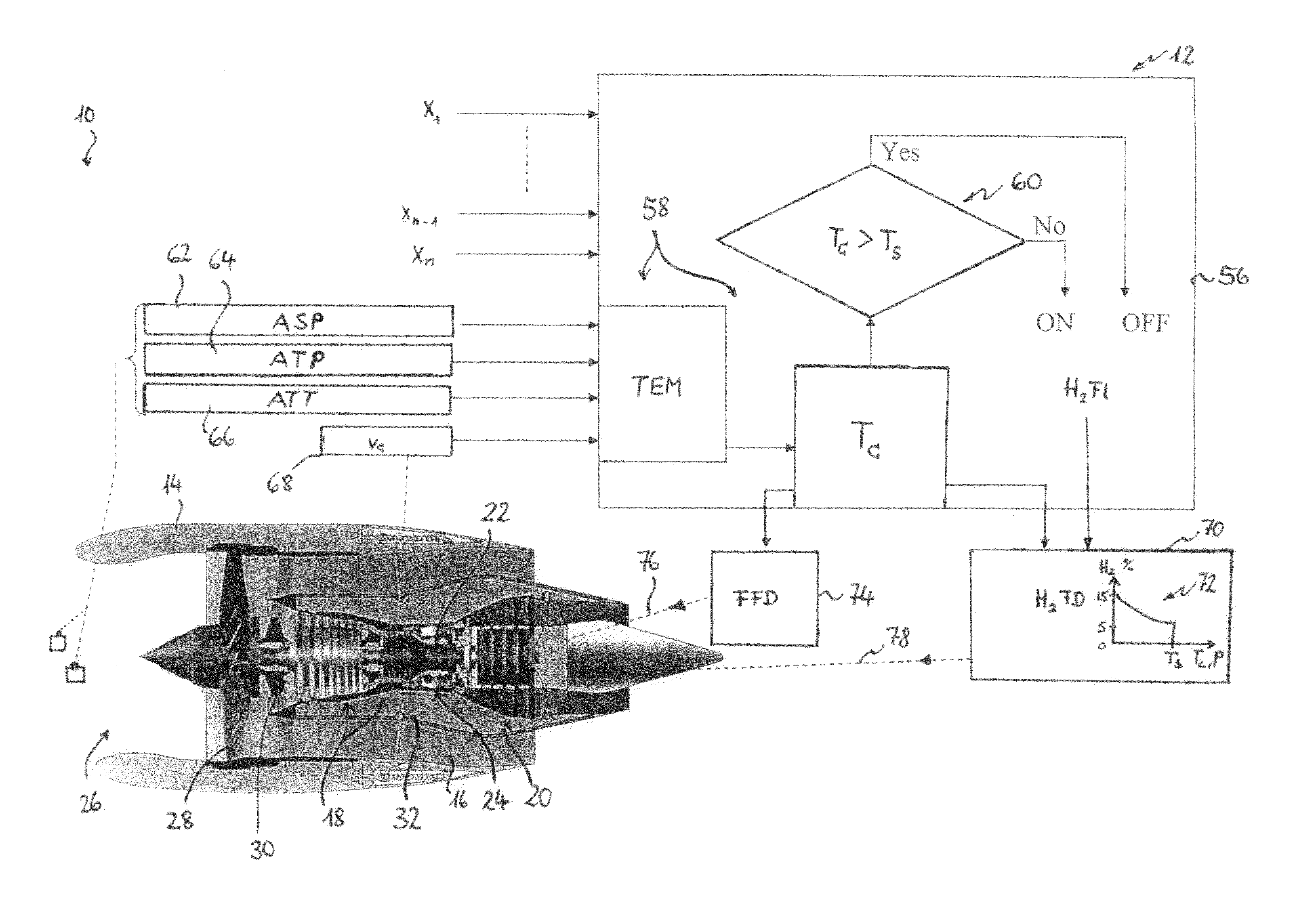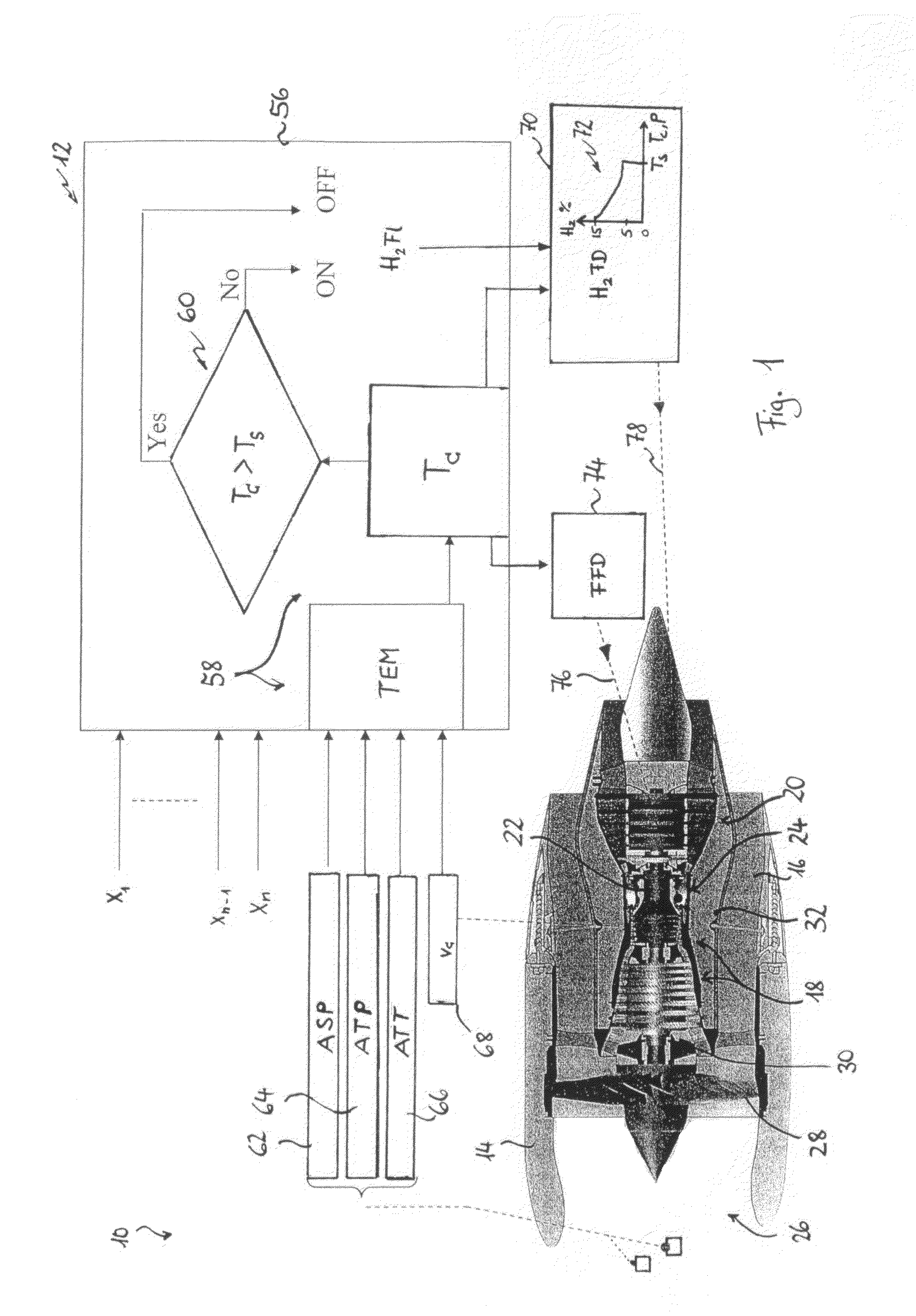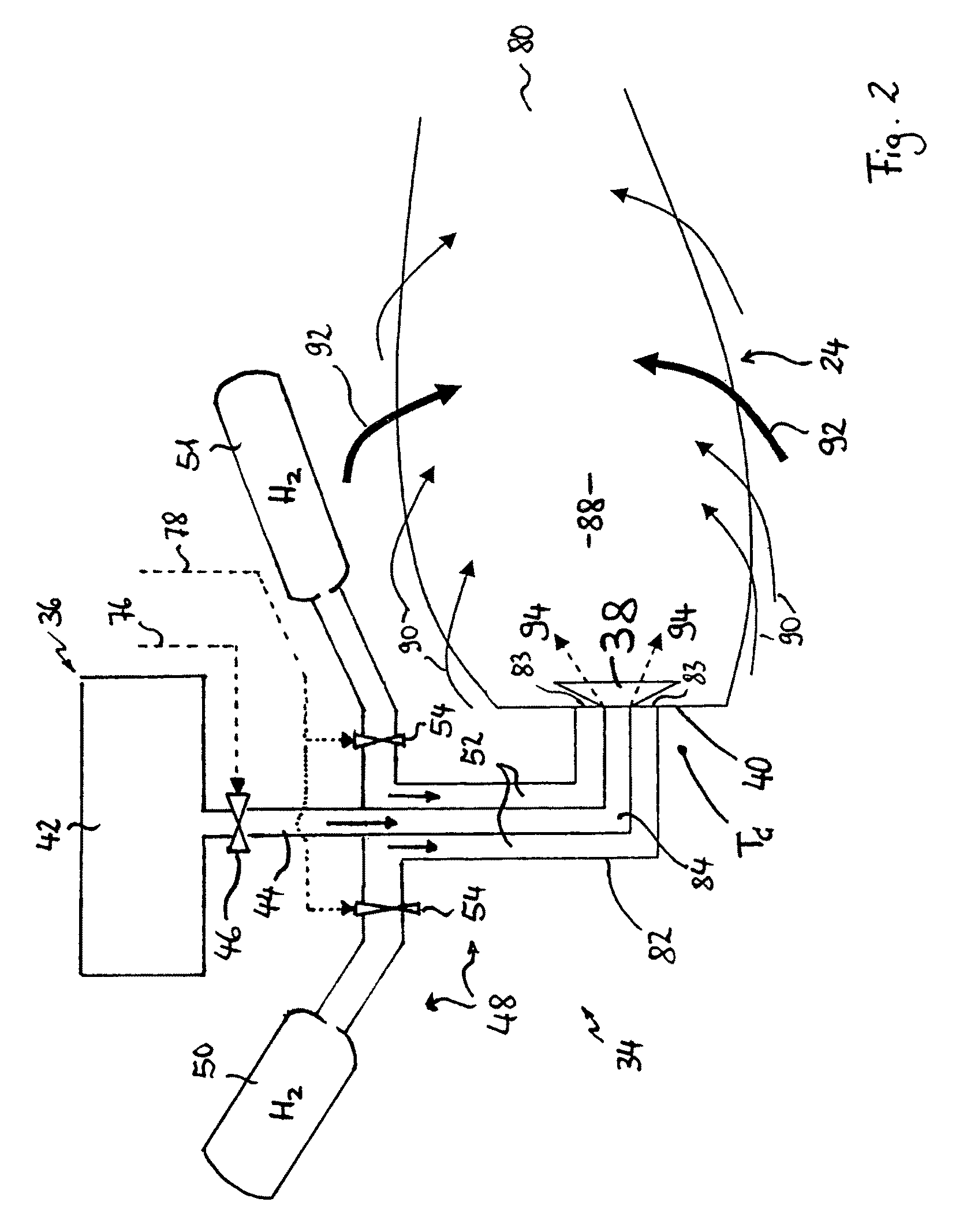Gas turbine engine and method for reducing turbine engine combustor gaseous emission
a gas turbine engine and combustor technology, applied in the field of turbine engines, can solve the problems of large combustor space, large catalyst space, and undesirable compounds in combustion systems, and achieve the effect of reducing the combustor size or weight of the combustor without increasing the size or weight of the combustor
- Summary
- Abstract
- Description
- Claims
- Application Information
AI Technical Summary
Benefits of technology
Problems solved by technology
Method used
Image
Examples
Embodiment Construction
[0045]FIG. 1 shows a gas turbine engine 10 with a turbine engine control system 12. The gas turbine engine 10 is adapted to be used as an aviation turbine engine and includes an outer housing 14 with a bypass duct 16; a compressor 18; a turbine 20; a core rotor 22 joining the compressor 18 and the turbine 20; and an annular combustor 24 between the compressor 18 and the turbine 20. At an inlet 26 of the housing 14, a fan 28 is connected to the core rotor 22. The compressor 18, the turbine 20 and the core rotor 22 form the core 30 of the gas turbine engine 10 which is enclosed by an inner housing 32. The inner housing 32 is surrounded by the bypass duct 16.
[0046]The compressor 18 compresses air entering the housing 14 through the inlet 26 and discharges the pressurized air to the combustor 24. In the combustor 24, the pressurized air is mixed with fuel. The air / fuel mixture is ignited to generate hot combustion gas which flows downstream from the combustor through the turbine 20. The...
PUM
 Login to View More
Login to View More Abstract
Description
Claims
Application Information
 Login to View More
Login to View More - R&D
- Intellectual Property
- Life Sciences
- Materials
- Tech Scout
- Unparalleled Data Quality
- Higher Quality Content
- 60% Fewer Hallucinations
Browse by: Latest US Patents, China's latest patents, Technical Efficacy Thesaurus, Application Domain, Technology Topic, Popular Technical Reports.
© 2025 PatSnap. All rights reserved.Legal|Privacy policy|Modern Slavery Act Transparency Statement|Sitemap|About US| Contact US: help@patsnap.com



